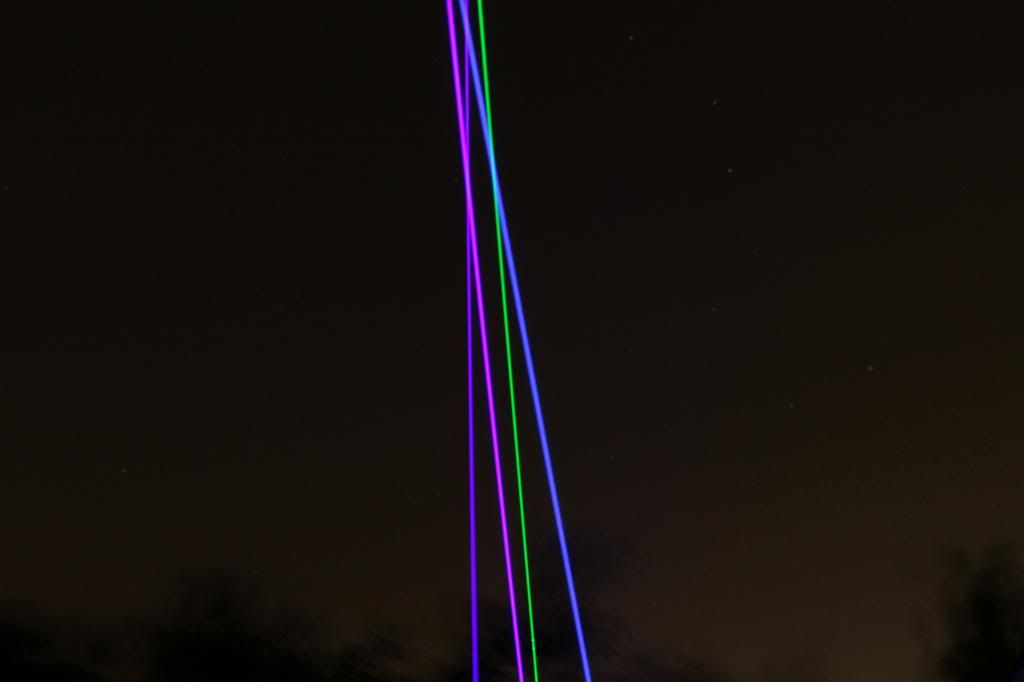- Joined
- May 4, 2009
- Messages
- 5,426
- Points
- 113
Very nice indeed, pictures make the review so much better :gj: +5 when it will let me.

Follow along with the video below to see how to install our site as a web app on your home screen.
Note: This feature may not be available in some browsers.




+1, great shot!
How would you compare those four, brightness wise?
Thanks I appreciate it ! It is a really cool wavelength ! I can only imagine how beautiful it is when pushed toward it's limits. I've been following the thread where rhd is getting crazy with this diode. I bet he has seen some beautiful shades of blue.Geese.. This is beautiful! I am definitely getting this diode now. Great job, love the pictorial!

Brightness wise the 5.6w 445 is the only thing I have that appears brighter than the 700mw 532nm. The 532nm is really intense and for some reason the beam itself seems more dense and saturated with green. Have you ever been around a person who is arc welding ? Every time I fire up the 5.6w 445nm people are like "Holy Mother of Photons, turn that thing off". So the 5.6w 445nm is so bright it actually hurts. The 700mw 532nm is intense and has a beautifully saturated beam. The 2w 462nm appears slightly brighter to me than the 4w 445nm with BE.
Thanks for the compliment. I appreciate it ! :beer:
Thanks I appreciate it ! It is a really cool wavelength ! I can only imagine how beautiful it is when pushed toward it's limits. I've been following the thread where rhd is getting crazy with this diode. I bet he has seen some beautiful shades of blue.
I took one your photos and adjusted the white balance. No settings or adjustments, just clicked on "white balance."
Eyeballs, like digital cameras and computer monitors, are like unbinned diodes: no two are alike, and you never know what you're going to get. Your right eye doesn't see color the same as your left. In the course of a day our color perception changes with minor variations in body temperature. (The green cones are especially sensitive to that.) As we get older, our macular pigment density declines, causing the wavelength at which we see the purest green to go up by 30nm or more. As we age, our lenses become yellow. Then there are normal genetic variations as common as differences in hair or eye color.
On the other hand, we have really great color-correction software in our brains, so we usually don't notice the differences. The software even gets automatically reprogrammed when we communicate with other people about color, noticing distinctions that we never noticed before. Our brains then amplify those distinctions if they are important to people who's opinions we value.
And to make a long story short, it's hard for the color-correction software in out brains to deal with self-luminant objects, especially if they are monochromatic, like lasers and diodes. When looking at a self-luminant object in isolation, in the dark, our brains tend to assume that it is a light-reflecting object illuminated by something like a D65 illuminant. With two lasers of two different colors, your brain will tend to treat each as part of the background for the other, making their colors seem farther apart.
Yes it would

